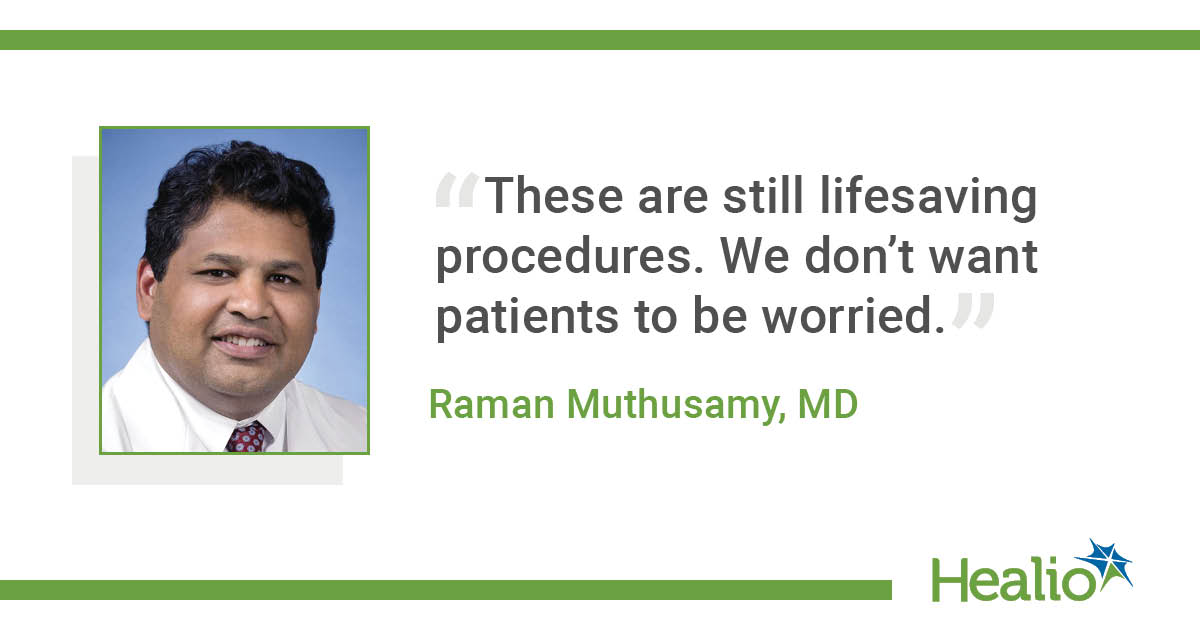Disposable Duodenoscopes One 'Menu Option' to Reduce Infection Risk
Click Here to Manage Email Alerts

Late last month, the FDA released a new recommendation that manufacturers and health care facilities start making the transition to duodenoscopes that have disposable components to reduce potential incidents of contamination or infection.
In postmarket studies it commissioned, the FDA found that there were still problems during the process of decontaminating scopes that must be done between procedures.
“[These studies] seem to show that even after adequate cleaning as it is currently recommended for these scopes, there are still a small percentage of scopes where you can find bacteria and potentially significant kinds of bacteria,” Klaus Mergener, MD, PhD, affiliate professor of medicine at the University of Washington in Seattle, told Healio Gastroenterology and Liver Disease. “That number the FDA believes is about 5%. The FDA considers that to be a number that is too high, hence the interest in exploring how that positive culture of endoscopes can be reduced further, and with it, the risk of exposing patients to these kinds of bacteria.”
Duodenoscopes have come under scrutiny in the past 5 years because their design can lead to contamination and potential transmission of bacteria from patient to patient if they are not adequately reprocessed. Raman Muthusamy, MD, director of endoscopy at UCLA Health System, told Healio Gastroenterology and Liver Disease that the common thinking was failure to follow the reprocessing guidelines was what was causing the issue.

“But you can see these are complex devices and these outbreaks continued to happen at multiple institutions internationally,” he said. “These are fundamentally, inherently challenging devices to clean, which is why you’ve seen this issue occur so many times at facilities that are quite experienced in reprocessing scopes. It clearly shows that there is a need to come up with advancements.”
The FDA’s recommendation came with the caveat that this switch to scopes with disposable components must be a transition. The agency said it is still working with manufacturers to revise reprocessing instructions but believes this transition is the best way to reduce risk for transmission of infections.
Recommendation for transition
The FDA’s recommendation for a transition will give health care facilities a chance to review their options, Muthusamy said. Since many hospitals lease their devices, they will have a chance to make a decision to switch to scopes with disposable components or even fully disposable scopes when their current leases end.
“It helps to start this process as soon as possible, so that people do have some lead time,” he said. “There is some additional cost that will likely be incurred, and this allows people to plan for that as they move forward.”
However, Mergener said he thinks that duodenoscopes with disposable components may just be one part of the solution and one that could take a few years to fully implement.
“The manufacturers of these alternative products that are being recommended, they do not have the capacity to serve the entire [endoscopic retrograde cholangiopancreatography] market,” he said. “They’re not even anywhere close to that capacity.”
Instead, Mergener said he could envision new ways to reprocess the currently available scopes that reduce, including a move toward sterilization, rather than the high-level decontamination that forms the basis of current reprocessing procedures. Since normal heat-related sterilization techniques can damage scopes and reduce their life span, Mergener said future protocols could point to gas-based sterilization, like ethylene oxide sterilization (ETO).
“They all have certain negative aspects. ETO is toxic and banned from some hospitals and even some states, but it is an example that there could be a product like this that could help us more efficiently and effectively clean and reprocess current types of endoscopes. I am not 100% convinced we have to go the route of using these types of new scopes that the FDA is envisioning or having them as one of several options.”
Before any potential reprocessing techniques are put into practice, Muthusamy said there first must be a way to test and compare them.
“We need a reliable way to prove that a preprocessed scope has adequately been made free of bacteria or biological agents,” he said. “Coming up with a valid way of verifying adequate reprocessing will be a very useful adjunct to all this, in that it will allow us to directly compare the many advances in these reprocessing technologies.”
As new scopes and new reprocessing techniques are developed and adopted, both experts said physicians and patients should not lose sight of how important ERCP procedures, and therefore, duodenoscopes are.
“These are still lifesaving procedures,” Muthusamy said. “We don’t want patients to be worried. We are making great strides in tackling this issue, and I am very optimistic that we will come up with a satisfactory solution in due time.”
Mergener said the pendulum may have swung too far in the other direction due to the fear for infection. Despite the real risks involved, the risk of avoiding lifesaving ERCP procedures altogether might be greater.
“It behooves all of us to continue to take this matter very serious and work together with the FDA, the infection control specialists and all the stakeholders on finding the best possible solutions,” he said. “The best solution may be what the FDA is recommending, or it might be something completely different. It may be a menu of potential options that individual hospitals can choose to do.” – by Alex Young
Disclosures: Mergener is the president-elect for the ASGE. The views expressed in this article are his own and do not necessarily reflect the position or policy of the ASGE. He reports no other relevant financial disclosures. Muthusamy reports consulting for Boston Scientific and Medivators.
